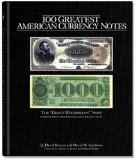Grading Your Coins

Grading Your Coins
A “grade” is described as a shorthand designed by coin experts (numismatists) to reveal a coin’s appearance. Simply put, if a certain coin collector tells another collector that he owns an uncirculated Charlotte 50 half eagle, both should already have a concept of the coins appearance without even seeing it, because of the claim of its grade.
Some disclose that designating a grade to rank or categorize a coin is more of an art rather than science, since often it is extremely subjective or biased; this applies particularly when working on “Mint State†coins where little differences, in terms of grade, make so much difference in the price.
Grading can be learned, studied and applied with a predictable and known outcome that eventually depends on judgment, not feelings.
Like any language, science, sport, or research, it is best to learn and understand coin grading one component at a time, through serious study and experience.
Today, most numismatists use the “Sheldon grading scaleâ€. While there are those that complain of “too many grades”, most experienced coin graders recognize and appreciate the fact that there is a wide range in features between ranges.
Strike
This is the method of stamping or imprinting a drawing or a symbol onto a blank. Depending on the coin’s design, it can either have weak or strong strike. An example of this would be the “Type II gold dollar†on which both sides (front and back) have the highest strike that is perfectly aligned, meaning, these designs require weak strikes.
Generally the strike is not a key factor in establishing the coin’s grade except when it is included in a series where the value is connected to strike.
Preservation of the coin’s surface
The number of coin marks as well as where they are placed is a significant element in establishing the grade. While there is no fixed formula on the number of coin marks that sets its grade, there are several regulated standards regarding the significance of the location or positioning of a scratch.
For instance, a coin having a deep scratch that it is not easily visible on its reverse (back) side will not be strictly penalized. However, if the same scratch was positioned on a noticeable or obvious central point on the front, such as the cheek on the Statue of Liberty, it would be penalized much more.
Patina or luster
A coin can have a variation of textures on the surface, influenced by design, the metal that was used and the “mint of originâ€. Textures can include frosty, satiny, proof-like and semi-proof-like.
When examining the coin’s surface in terms of grade, two things should be looked at; the quantity, or what is left of the original skin (has to be intact), and the location and amount of marks.
Luster is important especially when determining whether a coin is either circulated or uncirculated. A coin in Mint State technically; is free of abrasion and wear and must not have significant breaks in its luster.
Color
This is a very subjective element in determining coin grade. For instance, a “gold coin†showing dark green-gold pigmentation may be unattractive to one collector and attractive to another.
As gold is moderately an inert metal, it is not prone to much color variance as copper or silver. Although wide ranging colors may exist in gold coins.
Almost all of US gold coins had been dipped or cleaned, therefore not anymore displaying their original color. As coin collectors become knowledgeable, most of them are attracted and fascinated to coins having their natural color. In most coin series, it is nearly impossible to discover original coin pieces.
Eye attraction or appeal
Color, luster, strike and surface marks come together, comprises “eye appealâ€. Note that a coin having superior “eye appeal†can be strong in one aspect, such as possessing exceptional luster but not quite as strong in another aspect, such as not so good color.
A coin that is undesirable in one aspect yet good enough in all the other aspects can still be distinguished as “below average†in “eye appealâ€.
Knowing how to grade a coin is very important so that one can have an idea of the value or price of the coin that he is buying or selling. When new to coin collecting, be sure to ask the help of an experienced collector or dealer when buying or exchanging your coins.
100 Greatest American Currency Notes: The Stories Behind The Most Colonial, Confederate, Federal, Obsolete, and Private American Notes
In this beautifully illustrated book, two of America’s best-known numismatists take the reader on a personal guided tour of our nation’s greatest currency notes. They’re all inside: the Lazy Deuce, the Tombstone Note, the Buffalo Bill, and more. You’ll see some familiar faces, such as Abraham Lincoln, George Washington, and even Santa Claus… and meet some unique and colorful characters like the mad Emperor Norton. Battleships and locomotives, Army officers and Indians, politicians and
List Price: $ 29.95
Price: $ 21.00
www.insidercoincollectingsecrets.com The Dollar and the economy are falling fast. Everyone needs to know how to protect themselves and their famlies from the coming depression. Collectable coins have intrinsic value, which means they have natural value that won`t loose over time. In this era of economic uncertainty , coin collecting is fast becoming the #1 hobby of 2009 . Who Else Wants To Know The Secrets To Starting And Growing An Amazing Coin Collection in NO Time Flat? Coin collecting is a delightful hobby, and it can be very lucrative too, if you know what you’re doing. I created this video to help you get started in this hobby on the right foot. The first step is to join my free coin collecting mini course. In my FREE Minicourse, Coin Collecting Secrets , you’ll learn * Which coins are worth collecting and which aren’t * How and where to get your first coins * How to figure out how much your coins are worth * Much, much more! Visit www.insidercoincollectingsecrets.com Now for your Free Starter Course.
Recommended Reading
- Canadian Coins
- What To Know About Challenge Coins
- Make Big Bucks From Selling Coins
- Gold Coin Investing: Do Your Homework
- Operating your own coin laundry business
Related posts:
- Coin Grading – a Technique you Must Master Coin Grading – a Technique you Must Master Main purpose of this article is to give you an insight on coin grading and guide you further into understanding everything related...



I can picture the illustrations, and they include a boy dressed up in an astronaut’s outfit (i.e., spacesuit). The boy is wandering through a dark, dreary mansion, and the bat with the nose bleed leads the boy to the umbrella that, when opened, rains gold coins down on the boy. I used to check this book out at the library when I was in grade school (early to mid 1980s), and it’s driving me crazy trying to remember the title. Thank you in advance for your assistance!